48 books by Indigenous writers to read to understand residential schools
David A. Robertson curated this list of fiction, nonfiction, poetry and children's books

David A. Robertson, a Swampy Cree author based in Winnipeg, writes books for readers of all ages. He has published several books across a variety of genres, including the graphic novelsWill I See?andSugar Falls, aGovernor General's Literary Award-winning picture book calledWhen We Were Alone, which wasillustrated by Julie Flett.
His most recent books are the novel The Theory of Crows, the YA seriesThe Misewa Saga,the picture book On the Traplineand the memoir Black Water. He also hostedthe CBCManitobapodcastKiwew.
Stories have played, & will continue to play, a role in educating Canadians, young & old, about the terrible legacy of Residential Schools. There's no excuse not to know the history or its impact. Here is a thread of books, thanks to all who listed them over the last week (1/?)
—@DaveAlexRobertsOn Sept. 30, Canada will markNational Day for Truth and Reconciliation, a time to commemorate children who died while being forced to attend residential schools, those who survived and made it home andtheirfamilies and communities still affected by the lasting trauma.
In 2021, Robertson curated this list of books by Indigenous writers about residential schools. He originally posted the list on Twitterand repurposed it for CBC Books.
Why David A. Robertson curated this list
My grandmother, Sarah Robertson, attended Norway House Indian Residential School in the 1920s and early 1930s. She died having never told her story, other than to remark to one of her granddaughters how sad it had made her when they cut her hair. And to tell my mother that her sister had died while attending Towers Island Day School, but she'd not found out until long after Maggie's death.
Her experience is lost history, a story that will remain forever untold. At Norway House Indian Residential School, officials fed children rotten food. Girls slept outside on balconies because enrolment was always overcapacity. Kids were tied up so that they wouldn't run away. In 1907, a boy, Charles Cline, ran away after getting beaten for wetting his bed. He lost six toes after seeking protection from the elements in a shed. And how were school officials held accountable? Charles's mom was given a bag of flour every month for the rest of the school year.
Stories have been, and always will be, the best way to educate ourselves about the truth.
My grandmother may have experienced similar trauma or may have avoided it by some miracle, but we'll never know.
Last week, the bodies of 215 children, some as young as three, were found buried at Kamloops Indian Residential School. Indigenous people knew a discovery like this was an eventuality as much as we know that it's a tragedy that will be repeated. The Truth & Reconciliation Commission confirmed 3,200 deaths as part of its investigation, but Senator Murray Sinclair believes there could be closer to 25,000. If at least 150,000 Indigenous children attended residential schools in its 165-year history, that means 17 per cent of the children died while attending residential school. Some schools' mortality rates were 40 per cent.
It can no longer be disputed that the residential school system was genocide, and the question now is: What are you going to do about it? Because outrage, thoughts and prayers, retweets and likes, are not enough.
I think the answer starts with stories. Stories have been, and always will be, the best way to educate ourselves about the truth. You have to recognize that you have the power to be the authors of reconciliation if you read as much as you can, listen as much as you can, learn as much as you can, and then take meaningful, informed action.
I don't know your role, but I know that youth are inherently better positioned than anybody to create the sort of change we need to see, and so we need to focus on them. Stories reveal the world to kids the world that was, the world that isand the world that can be. What kind of future do you want to have?
Here are some books by Indigenous authors to get you started on your learning journey. Please keep in mind that this is not an exhaustive list. There are more stories out there.
Indian Horse byRichard Wagamese
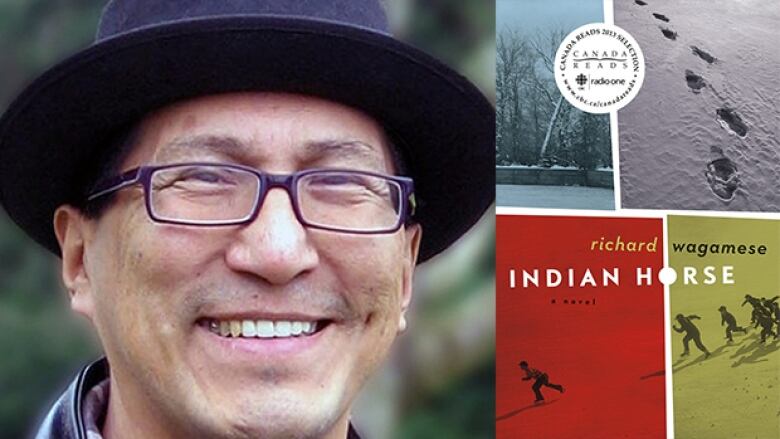
IndianHorsebyRichard Wagamesetells the story of Saul Indian Horse, a young Ojibway boy who is ripped from his family and forcibly placed inresidential school. Saul, agifted hockey player, is both victim and witness to the dehumanizing abuse of students at the school. As an adult, Saul becomes dependent on alcohol to cope with the trauma of his childhood.
IndianHorsewas defended onCanada Reads2013 by Carol Huynh.
Wagamesewasan Ojibwaywriter from the Wabaseemoong First Nation in Ontario.He is the author of six novels, one collection of poetry and three memoirs. Two of his books, IndianHorse and One Story, One Song, appear on this list. He died in 2017.

The Orange Shirt Story& Phyllis's Orange Shirt, both writtenbyPhyllis Webstad, illustrated by Brock Nicol

Orange Shirt Day on Sept. 30 is an annual opportunity for people of all ages to stand in solidarity with residential school survivors and their families by wearing orange. The event is inspired by residential school survivor PhyllisWebstad'sexperience of being stripped of a brand neworange shirt on her first day attending residential school when she was just six years old.Webstad'sbook,The Orange Shirt Story,shares what it meant for the writer to be deprived of her beloved clothing and her sense of identity at such a young age.
The Orange Shirt Storyis for readers aged 7-10.
Phyllis's Orange Shirt is an adaptation of The Orange Shirt Storyfor readers aged 4-6.
Webstad is Northern Secwepemc from the Stswecem'c Xgat'tem First Nation. She has inspired thousands of people to honour residential school survivors and their families. Two of her books,The Orange Shirt StoryandPhyllis's Orange Shirt, are on this list.
Brock Nicol is an illustrator from Ottawa.

Shi-shi-etkobyNicola I. Campbell, illustrated by Kim LaFave
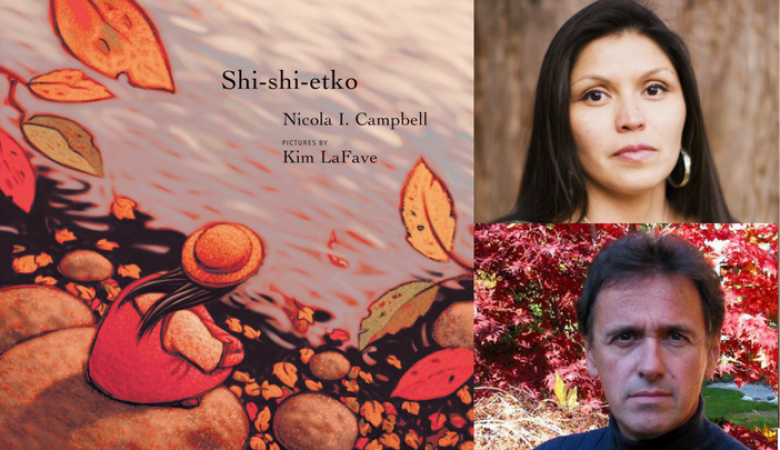
Shi-shi-etkois the story of Shi-shi-etko,a young girl who has only a few days before she is sent off to a residential school. In the time she has left, she soaks in the natural wonders of the world around her, from the tall grass to the tadpoles in the creek. Before she leaves, the child learns valuable lessons and wisdom needed in the trying times ahead.
Nicola I. Campbell is an author of Nekepmx, Syilx and Mtis descent, from British Columbia. Her stories weave cultural and land-based teachings that focus on respect, endurance, healingand reciprocity.
Kim LaFave is a painter and illustrator living in Roberts Creek, B.C.
Campbell and LaFave co-createdShi-shi-etkoand its sequelShin-chi's Canoe.
Shin-chi's Canoe byNicola I. Campbell, illustrated by Kim LaFave

Shin-chi's Canoeis the sequel to Campbell'sShi-shi-etko. It tells the story of six-year-old Shin-chi as he heads to residential school for the first time with his older sister, Shi-shi-etko. As the children are driven away in the back of a cattle truck, Shin-chi's sister tells him all the things they must remember about home. Shin-chi knows it will be a long time before he sees his family, not until the sockeye salmon return. Shin-chi endures a long year of hard work, hunger and loneliness before returning home to his family with his sister.
Shin-chi's Canoe won the 2009 TD Canadian Children's Literature Award and the 2008 Governor General's Literary Award for illustration.
Campbell and LaFave co-createdShi-shi-etkoand its sequelShin-chi's Canoe.
My Name is SeepeetzabyShirley Sterling

Written in the form of a diary,My Name is Seepeetzarecounts the story of a young girl taken from home to attend the Kamloops Indian Residential School in the 1950s. My Name is Seepeetzahas been described as an honest, inside look at the residential school experience one that highlights the resilience of a child in a place governed by strict nuns, and arbitrary rules.
My Name is Seepeetzawon theSheila A. Egoff Children's Literature Prize and wasshortlisted for the Governor General's Literary Awards for young people's literature textin 1993.
Shirley Sterling was a member of the Interior Salish Nation of British Columbia. HerNlaka'pamux name is Seepeetza.
Seven Fallen Feathers byTanya Talaga

InSeven Fallen Feathers,investigative journalistTanya Talagatravels to Thunder Bay, Ont., to investigate the deaths of seven Indigenous teenagers: Jordan Wabasse, Kyle Morrisseau, Curran Strang, Robyn Harper, Paul Panacheese, Reggie Bushie and Jethro Anderson. Talaga looks at how their lives and untimely deaths can teach us about the injustice faced by Indigenous communities on a daily basis.
Seven Fallen Featherswon the 2018 RBC Taylor Prize for nonfiction.
Talaga is an investigative journalist. In 2017, she was named the Atkinson Fellow for public policy. The work produced during this period forms the basis of Talaga's 2018 CBC Massey Lectures,All Our Relations: Finding the Path Forward.

Dear Canada, These Are My Words: The Residential School Diary of Violet PesheensbyRuby Slipperjack

Ruby Slipperjack'schildren's book,Dear Canada: These Are My Words, is the diary of a 12-year-old girl named Violet Pesheens, who is a student at aresidential school.Slipperjack drew on her own experiencesattending Shingwauk Residential School in Sault Ste. Marie, Ont.
Slipperjack is a member of the Eabametoong First Nation. She has written seven novels for middle grade and teen readers. She lives in Thunder Bay, Ont., and recently retired as a professor in the Indigenous Learning Department at Lakehead University. Shewon the 2017Vicky Metcalf Award for Literature for Young People.
In Search of April RaintreebyBeatrice Mosionier
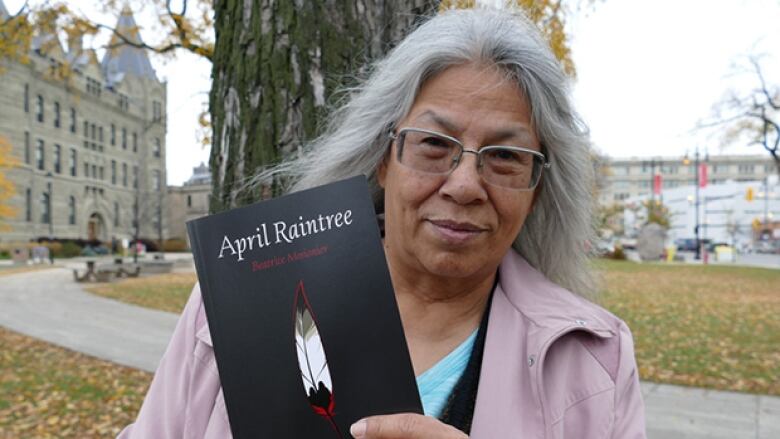
In Search of April Raintree is about two young sisters who are taken from their home and family. Powerless to change their fortunes, they are separated and each put into different foster homes. Yet over the years, the bond between them grows. As they each make their way in the society, one embraces her Mtis identity, while the other tries to leave it behind. In the end, out of tragedy, comes an unexpected legacy of triumph and reclamation.First published in 1983, In Search of April Raintreehas become a Canadian classic.
Beatrice Mosionier was born in St. Boniface, Man.She decided to write In Search of April Raintreefollowing the death of two sisters to suicide.

The Train by Jodie Callaghan, illustrated Georgia Lesley
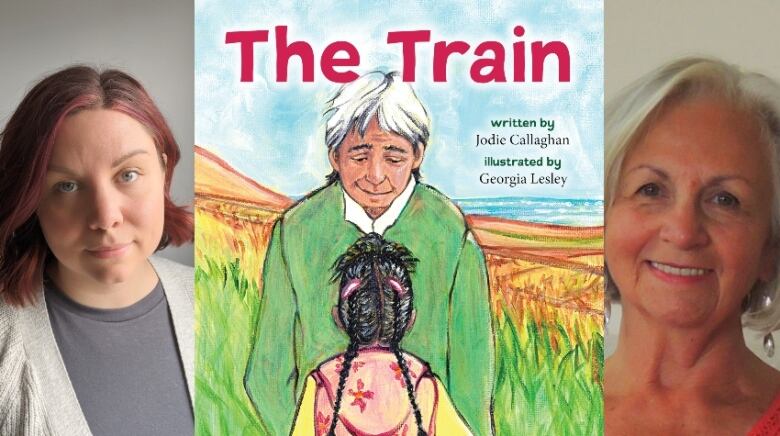
In this book, a girl named Ashley meets her great-uncle by the old train tracks near their Nova Scotia community.The Trainis a story of the legacy of residential schools in Canada as her uncle explains his experience and loss of identity. The book is a story of remembrance, hope and reconciliation.
The Trainwas a finalist for the 2021 Silver Birch Express Award.
Jodie Callaghan is aMi'gmaw author and storyteller from the Listuguj First Nation in Gespegewa'gi near Quebec.
Georgia Lesley is an artist and illustrator based in British Columbia's Cariboo region.
Fatty Legs byChristy Jordan-Fenton & Margaret Pokiak-Fenton, illustrated by Liz Amini-Holmes

Fatty Legs: A True Storyis a picture book inspired by the true story of Margaret-Olemaun Pokiak-Fenton's experience at residential school. As a young girl living in the High Arctic, Margaretwas determined to learn to read even though it meant leaving her home and everything she knew behind. Despite her father's warning about the horrors of residential schools, Margaret makes the longjourney south where she encounters the Raven a hook-nosednun who immediately dislikesMargaret. In a show of cruelty, the Raven gives Margaret red stockings instead of the grey ones the other girls receive, making her the laughingstock of the school. Margaret gets rid of the stockings and must teach the Raven a lesson about human dignity.
Margaret-Olemaun Pokiak-Fenton wasaInuvialuit knowledge keeper andresidential school survivor. She was the co-author of several books, includingFatty Legs: A True Story,A Stranger At Home,When I Was EightandNot My Girl.She died in2021.
Christy Jordan-Fentonis Pokiak-Fenton's daughter-in-law and co-author. She now lives in Fort St. John, B.C.
Gabrielle Grimard has illustrated over 30 picture books, includingWhen I Was Eight,Not My GirlandStolen Words.She lives in Quebec.

I Am Not A Number byJenny Kay Dupuis & Kathy Kacer, illustrated by Gillian Newland
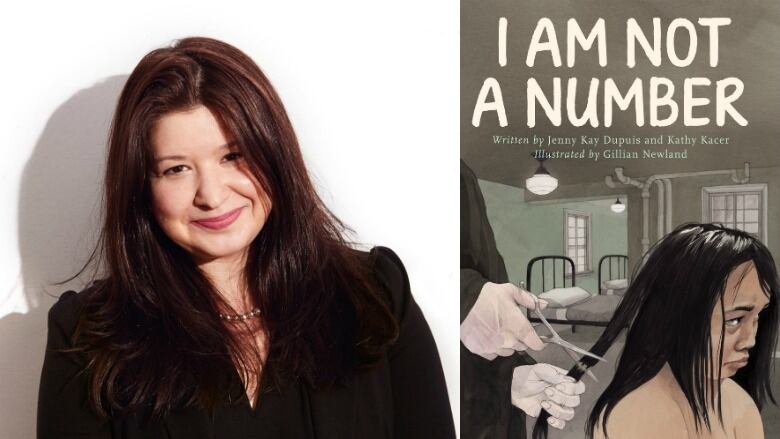
I Am Not a Number follows the story of eight-year-old Irene as she gets removed from her First Nations family to live in a residential school confused, frightened and terribly homesick. When she goes home for summer holidays, Irene's parents decide never to send her and her brothers away again. Based on the life of co-author Jenny Kay Dupuis' grandmother, the book brings a terrible part of Canada's history to light in a way that educates the children.
Dupuis is of Anishinaabe Ojibway ancestry and a proud member of Nipissing First Nation. She is an educator, researcher, artist and speaker who works full-time supporting the advancement of Indigenous education. She lives in Toronto.
Kathy Kacer is well known for her children's books about the Holocaust. Her books have won awards including the Silver Birch, the Red Maple, the Hackmatack and the Jewish Book Award. Kacer is a former psychologist and lives in Toronto.
Gillian Newland is an artist wholives in Halifax. She has illustrated the booksI Am Not a Number, TheMagician of AuschwitzandA Boy Asked The Wind.

When We Were Alone byDavid A. Robertson, illustrated byJulie Flett

In When We Were Alone,a girl asks her grandmother about why she wears her hair in a long braid and why she speaks in another language. Her grandmother responds by describing her childhood,growing up in a residential school.
When We Were Alonewon the 2017Governor General's Literary Award for young people's literature illustrated books.
David A. Robertson is an author andgraphic novelist based in Winnipeg. He has written several books in many genres, includingthe graphic novelsWill I See?andSugar Falls, thepicture bookWhen We Were Alone,the YA series The Reckoner andthe memoirBlack Water.
Julie Flett has illustrated several picture books includingLittle You,My Heart Fills with HappinessandWe Sang You Home.Her picture bookBirdsongwasa finalist for the TD Canadian Children's Literature Award.

A Stranger At Home byChristy Jordan-Fenton & Margaret-Olemaun Pokiak-Fenton, illustrated by Liz Amini-Holmes

In this sequel toFatty Legs, Margaret Pokiak is now 10 years old and can hardly wait to return home from residential school. But her homecoming is not what she hopes for. "Not my girl," is what her mother says when she arrives. The story follows Margaret as she moves through feelings of rejection and tries to reconnect with her family, language and culture.
Pokiak-Fenton,Jordan-Fentonand Grimardhaveworked on several books together, including Fatty Legs: A True Story,A Stranger At Home,When I Was EightandNot My Girl. Many of these titles can be found on this list.
Porcupines and China Dolls byRobert Arthur Alexie
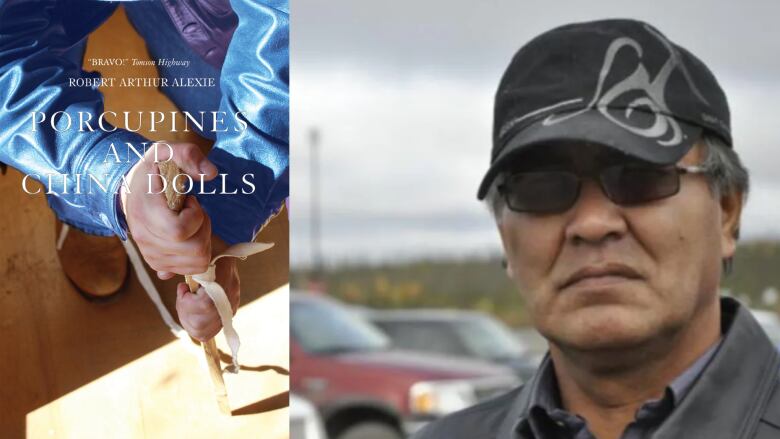
Porcupines and China Dolls is about two men, James and Jake, confronting their childhood abuse and breaking the silence to begin a journey of healing and rediscovery. Enough alcohol silences the demons for a night; a gun and a single bullet silences demons forever. When a friend dies by suicide and a former priest appears on television, the community is shattered.
Robert Arthur Alexie was born and raised in Fort McPherson in Canada's Northwest Territories. He became the chief of the Tetlit Gwich'in of Fort McPherson, served two terms as vice-president of the Gwich'in Tribal Council, and was instrumental in obtaining a land claim agreement for the Gwich'in of the Northwest Territories. He died in 2014.
The Marrow Thieves byCherie Dimaline
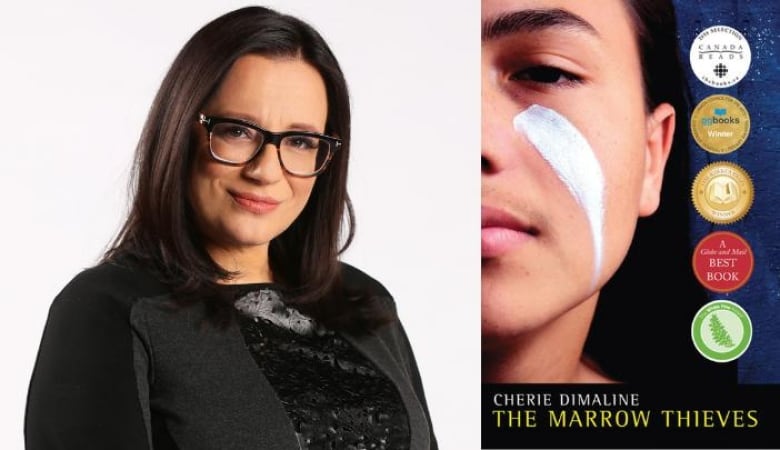
In the dystopian world ofCherie Dimaline'saward-winningThe Marrow Thieves, climate change has ravaged the Earth and a continent-wide hunt and slaughter of Indigenous people is underway. Wanted for their bone marrow, which contains the lost ability to dream, a group of Indigenous people seek refuge in the old lands.
The Marrow Thieveswon the Governor General's Literary Award for children's text in 2017 and was defended byJully BlackonCanada Reads2018.
Cherie Dimaline is a Mtis author and editor. Her other books include Red Rooms,The Girl Who Grew a Galaxy,A Gentle HabitandEmpire of Wild.

When I Was Eight byChristy Jordan-Fenton and Margaret Pokiak-Fenton, illustrated by Gabrielle Grimard
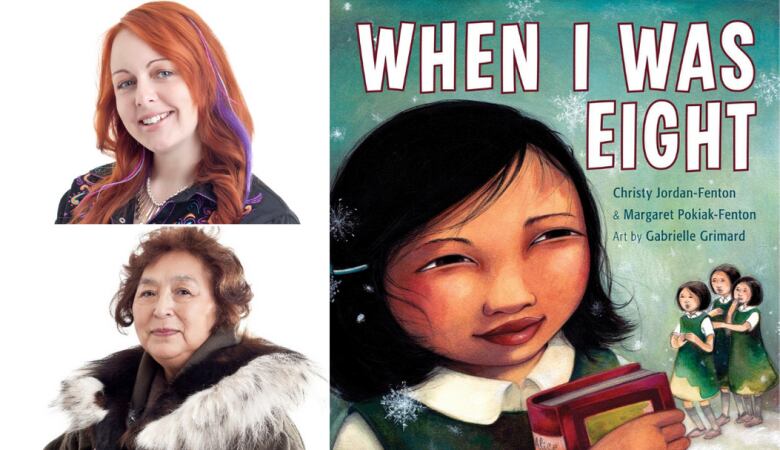
In When I Was Eight, Olemaun is eight and knows a lot of things. But she doesn't know how to read. Ignoring her father's warnings, she travels far from her Arctic home to the outsiders' school to learn. Based on the true story of co-author Margaret Pokiak-Fenton, the book makes the bestselling Fatty Legs accessible to younger readers, reminding us what power we hold when we can read.
Pokiak-Fenton,Jordan-Fentonand Grimardhaveworked on several books together, including Fatty Legs: A True Story,A Stranger At Home,When I Was EightandNot My Girl. Many of these titles can be found on this list.
Stolen Words byMelanie Florence,illustrated by Gabrielle Grimard

Stolen Words tells the story of the beautiful relationship between a little girl and her grandfather. When she asks her grandfather how to say something in his language Cree he admits that his language was stolen from him when he was a boy. The little girl then sets out to help her grandfather find his language again. This picture book explores the intergenerational impact of the residential school system that separated young Indigenous children from their families.
Melanie Florence is a writer of Cree and Scottish heritage based in Toronto. She is also the author of Missing Nimama, which won the 2016 TD Canadian Children's Literature Award and the 2017 Forest of Reading Golden Oak Award.
Gabrielle Grimard has illustrated over 30 picture books, including When I Was Eight and Not My Girl. She lives in Quebec.

The Journey Forwardby Richard Van Camp & Monique Gray Smith
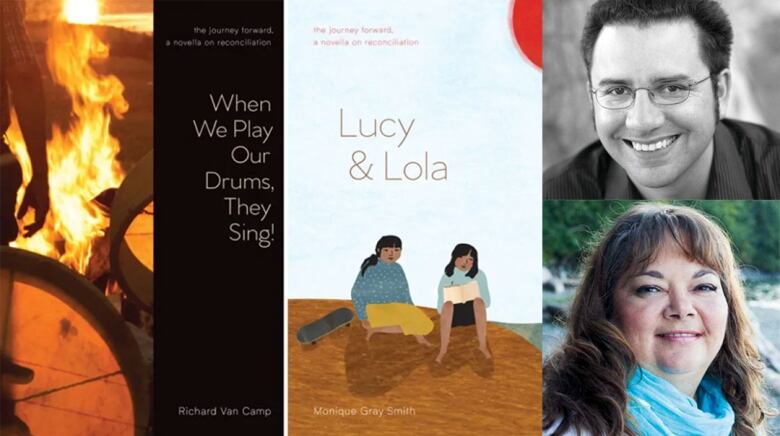
When We Play Our Drums, They Sing!by Richard Van CampandLucy & Lolaby Monique GraySmith aretwo novellasabout reconciliation, healing and a way forward in one beautifully packaged flip book. Van Camp andGray Smith each take a side of the column and present different young Indigenous characters as they navigate a world made uneasy by colonialism and fracture.
Van Camp writes comics, picture books and novels, most recently publishing the short story collectionMoccasin Square Gardens.He is a member of the Dogrib Nation from Fort Smith, N.W.T.
Gray Smith is a writer of Cree, Lakotaand Scottish heritage who currently lives inVictoria. She is also the author of the novelsTilly: A Story of Hope and Resilience andTilly and the Crazy Eights,the picture booksWhen We Are KindandMy Heart Fills with Happinessandthe nonfiction middle-grade bookSpeaking Our Truth.Speaking Our Truthis also on this list.

Sugar Falls byDavid A. Robertson, illustrated by Scott B. Henderson
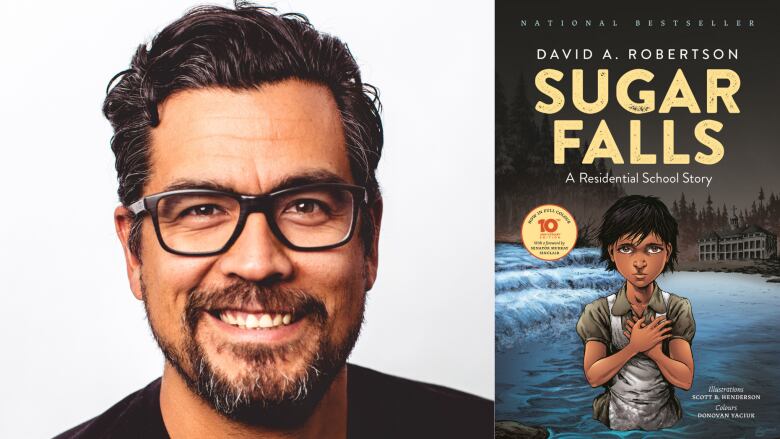
Sugar Fallsis based on the true story of Betty Ross, anelder from Manitoba's Cross Lake First Nation. Adopted into a loving family at a young age, Ross was sent to residential school at eight years of age and endured abuse while she was there.Sugar Fallsrecounts her journey in an age-accessible way, and highlights the role her father's teachings played in helping Ross to keep hope alive.
A 10th anniversary edition ofSugar Fallswas published in 2021.
Sugar Fallsis one of several books by Robertson and illustrated by Henderson on this list.

Not My Girl byChristy Jordan-Fenton & Margaret-Olemaun Pokiak-Fenton, illustrated by Gabrielle Grimard
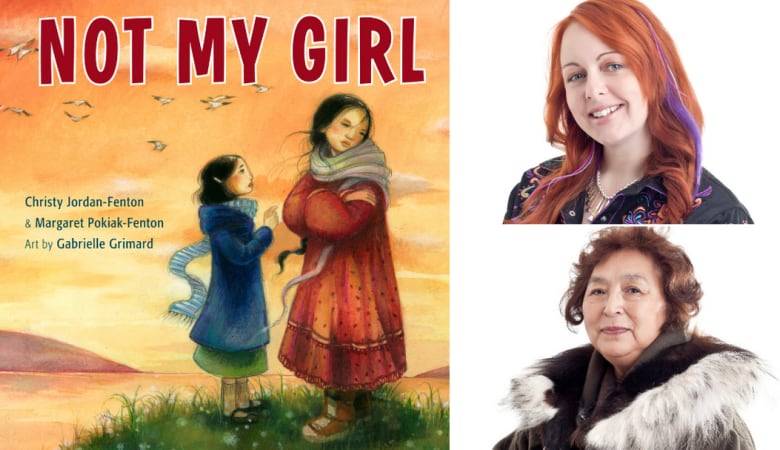
Not My Girl is a sequel to the picture book When I Was Eight. The book makes the award-winning memoir, A Stranger at Home, accessible to younger children. Based on Margaret-Olemaun's real life, it is a poignant story of a determined young girl's struggle to belong. Margaret's years at school have changed her. At ten years old, she has forgotten her language and the skills to hunt and fish. Her only comfort is in the books she learned to read.
Pokiak-Fenton,Jordan-Fentonand Grimardhaveworked on several books together, including Fatty Legs: A True Story,A Stranger At Home,When I Was EightandNot My Girl. Many of these titles can be found on this list.
As Long as the Rivers Flow byLarry Loyie, withConstance Brissenden, illustrated byHeather Holmlund

In As Long as the Rivers Flow, Cree author Larry Loyie writes about his last summer with his family before going to residential schoolin Northern Alberta in 1944. Lawrence learns things like how to care for a baby owl, and how to gather medicinal plants with his Kokom. Loyie's story highlights how his education at home was disrupted by the residential school system.
As Long as the Rivers Flow won the Norma Fleck Award for Canadian Children's Non-Fiction and First Nation Communities Read.
Larry Loyie was born in Slave Lake, Alta.,andlivedin Edmonton. Healso wrote Goodbye Buffalo BayandThe Gathering Tree. He died in 2016.
Heather D. Holmlund is an artist and painter. She studied fine art and the visual arts at York University, specializing in watercolour.
Five Little Indians byMichelle Good

InFive Little Indians, Kenny, Lucy, Clara, Howie and Maisie were taken from their families and sent to a residential school when they were very small. Barely out of childhood, they are released and left to contend with the seedy world of eastside Vancouver. Fuelled by the trauma of their childhood, the five friends cross paths over the decades and struggle with the weight of their shared past.
Five Little Indianswon the2020 Governor General's Literary Award for fictionandthe 2021 Amazon Canada First Novel Award.
Michelle Good is a Cree writer and retired lawyer, as well as a member of Red Pheasant Cree Nation in Saskatchewan.Five Little Indiansis her first book.

One Story, One Song byRichard Wagamese
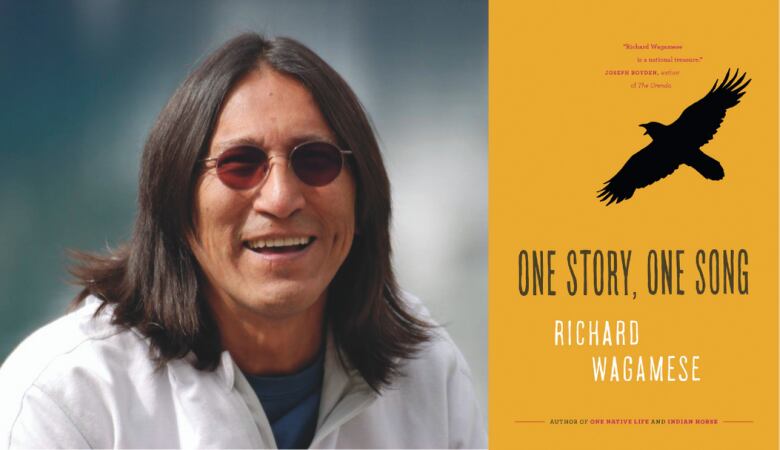
In One Story, One Song, Wagamese invites readers to accompany him on his travels. His focus is on stories: how they shape us, how they empower us, how they change our lives. Ancient and contemporary, cultural and spiritual, funny and sad, the tales are grouped according to the four essential principles Ojibway traditional teachers sought to impart: humility, trust, introspection and wisdom.
Wagamese is the author of several books, including Medicine Walk,Ragged Company,Him Standing, Dream Wheel,the poetry bookRunaway DreamsandmemoirsFor Joshua,EmbersandOne Native Life. Two of his books,IndianHorseandOne Story, One Song, appear on this list.He died in 2017.
The Red Files byLisa Bird-Wilson
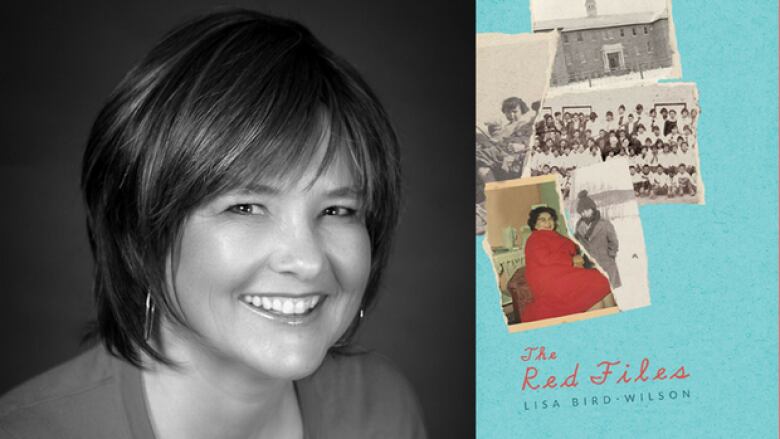
Drawing from family photographs and archival records, Lisa Bird-Wilson writes poetry to commemoratethe generations of children traumatized by the residential school system. The project is a personal one as Bird-Wilson's own grandparents, aunts and uncles were amongthe 150,000 Indigenous students to attend residential schools. The title of the book comes from the federal government, who organized the residential school archives into"black files" and "red files."
Bird-Wilson is a Mtis andnhiyawwriter who lives in Saskatchewan. She is also the author of the short story collectionJust Pretending, thenonfiction bookAn Institute of Our Own and the novel Probably Ruby.
The Education of Augie Merasty byJoseph Auguste Merasty, with David Carpenter

Joseph AugusteMerastywas 86 when he approached David Carpenter about writing his memoirs. At the time Merasty was homeless, suffered from alcoholism and was prone to disappearing for long periods of time. But the pairpersisted in creatinga heart-rending record of Merasty'sexperience with abuse in St. Therese Residential School near Sturgeon Landing, Sask. He was five years old when he first enrolled at the institution in 1935. They shared Merasty's story inThe Education of Augie Merasty.
The Education of Augie Merasty was shortlisted for the CODE Burt Award for First Nations, Inuit and Mtis Literature.
Merasty was a storyteller, fisherman, trapper, amateur boxer and "jack of all trades."Hedied at the age of 87 in 2017.
David Carpenter is an author and fisherman based in Saskatoon. He has written 10 books, including Niceman Cometh and A Hunter's Confession.

Speaking Our Truth byMonique Gray Smith

InSpeaking Our Truth, Cree, Lakota and Scottish authorMonique Gray Smithmakes the topic of reconciliation accessible to a young audience of Indigenous readers and aspiring allies alike. The innovative book helps young readers understand the history of the residential school system in Canada and its lasting effects on survivors today. Inspired by Canada's Truth and Reconciliation Commission, the book includes questions and prompts to help young people think about these complicated issues, and how to move forward with understanding and empathy.
Speaking Our Truthwas shortlisted for the 2018 TD Canadian Children's Literature Award.
Gray Smith's many other books include the novelsTilly: A Story of Hope and Resilience andTilly and the Crazy Eights,the picture booksWhen We Are KindandMy Heart Fills with Happiness. Her novellaLucy & Lolais also on this list.

They Called Me Number One byBev Sellars

Xat'sullchief Bev Sellarstells the story of three generations of Indigenous women who survivedthe residential school system in Canada: her grandmother, her mother and herself. Sellarsshares stories of enduring starvation, forced labour and physical abuse at St. Joseph's Mission in Williams Lake, B.C., a place that prided itself on "civilizing" Indigenous children.
Sellars is also the author ofPrice Paid: The Fight for First Nations Survival.
I Lost My TalkbyRita Joe&I'm Finding My TalkbyRebecca Thomas, both illustrated by Pauline Young
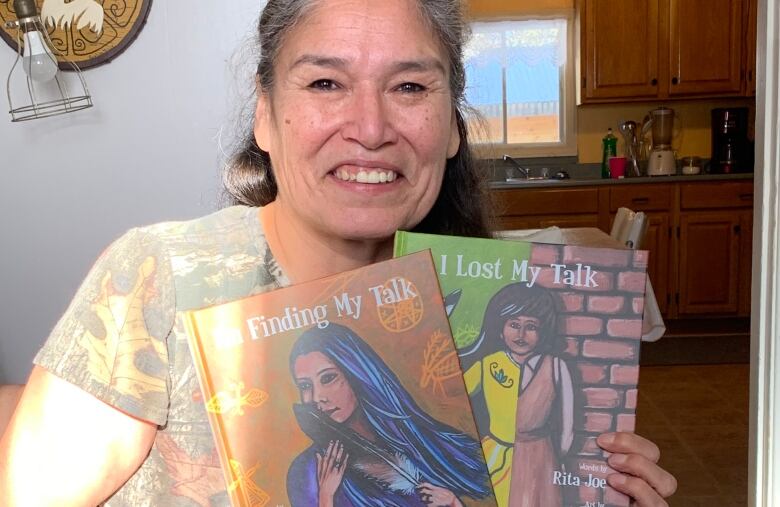
I Lost My Talkshares Rita Joe's iconic poemwith a new generation.I Lost My Talkis about how Joe, aMi'kmawelder and poet, lost her language and culture after she was sent to residential school.
I'm Finding My Talkis Rebecca Thomas's response to I Lost My Talk. Thomas is a poet and a second-generation residential school survivor. InI'm Finding My Talk,she celebrates reconnecting with her language and culture.
Both books are for readers aged 4-8.
Both books are illustrated by Pauline Young, aMi'kmawillustrator who lives in New Brunswick.
7 Generations: A Plains Cree Saga byDavid A. Robertson, illustrated by Scott B. Henderson
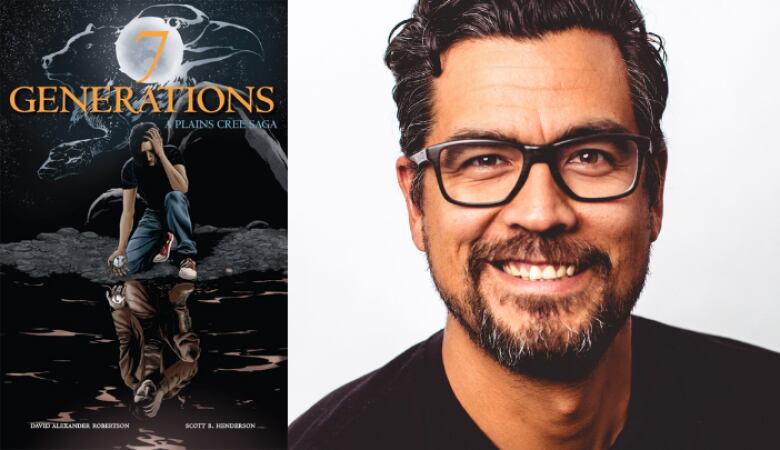
7 Generations is a four-part graphic novel. The story follows one Indigenous family over three centuries and seven generations. It was originally published as a series of four graphic novels: Stone, Scars, Ends/Beginsand The Pact.
7 Generations is one of several books by Robertson and illustrated by Henderson on this list.
Amik Loves SchoolbyKatherena Vermette,illustrated by Irene Kuziw

Amik tells Moshoom about his wonderful school. Then his grandfather tells him about the residential school he went to, much different from Amik's school. Amik Loves School is one book in The Seven Teachings Stories series. The Seven Sacred Teachings of the Anishinaabe love, wisdom, humility, courage, respect, honesty and truth are revealed in seven stories for children.
Katherena Vermette is a Mtis writer from Treaty One territory.She won the Governor General's Literary Award for poetry for her first book, North End Love Songs. Her debut novel, The Break, was a finalist on Canada Reads 2017.
Irene Kuziw is a freelance artist and illustrator. She has worked in galleries, museums and schools. Her work has been exhibited in numerous art shows. A graduate of the University of Manitoba School of Art, Kuziw lives in the Interlake region of Manitoba.
Up Ghost River byEdmund Metatawabin, with Alexandra Shimo

Up Ghost Riveris a memoir of Edmund Metatawabin'sexperience in residential school. Metatawabin was taken from his family at the age of seven, physically and sexually abused by staff members, and stripped of his Indigenous identity in school. As an adult, Metatawabinsuffered from PTSD and became addicted to alcohol. In seeking treatment with an Indigenous support group, Metatawabinwas able to come to terms with what happened to him and has since become a counsellor, championing Indigenous knowledge.
Metatawabinis a Cree writer, educator, activist and former Chief of Fort Albany First Nation.
Alexandra Shimo is an author and journalist based in Toronto. She is a former producer for CBCRadio and editor at Maclean's. She is also the author of Invisible North.
Broken Circle byTheodore Fontaine

Broken Circle is a memoir by Theodore Fontaine, who lost his family and freedom just after his seventh birthday, when his parents were forced to leave him at an Catholic residential school. Twelve years later, he left school frozen at the emotional age of seven confused, angry and on a path of self-destruction. Step by step, he began a journey of self-exploration and healing.
Fontaine is a member of the Sagkeeng First Nation in Manitoba. He attended the Fort Alexander Indian Residential School and the Assiniboia Indian Residential School. Fontaine was chief of the Sagkeeng First Nation and the chair of the Indigenous Leadership Development Institute based in Winnipeg. He died in May2021.
In My Own MoccasinsbyHelen Knott

Helen Knott'smemoir,In My Own Moccasins, is a story of addiction, sexual violence and intergenerational trauma. It explores how colonization has impacted her family over generations. But it is also a story of hope and redemption, celebrating the resilience and history of her family.
Knott is a poet and writer of Dane Zaa, nehiyawand European descent. Shewas chosen for the 2019 RBC Taylor Prize Emerging Writers Program.In My Own Moccasinsis her first book.
The Reason You Walk by Wab Kinew

The Reason You Walk is amemoir by politician and broadcaster Wab Kinew. After his father was diagnosed with terminal cancer, Kinew was determined to reconnect with his father, a residential school survivor and respected chief. In the process, Kinew reflects on his own troubled youth.
Kinewis the leader of Manitoba's New Democratic Party. Prior to his career in politics, Kinewwas a musician and broadcaster, hosting the CBCseries8th FireandCanada Readsin 2015. He is also the author ofGo Show the World,a children's picture book about Indigenous heroes throughout history.
Betty: The Helen Betty Osborne Story byDavid A. Robertson,illustrated by Scott B. Henderson

Helen Betty Osborne, known as Betty, dreamed of becoming a teacher. She left her home to attend residential school and high school in a small town in Manitoba. On November 13, 1971, Betty was abducted and brutally murdered by four young men. Initially met with silence and indifference, her tragic murder resonates loudly today. Betty represents one of almost 1,200 Indigenous women in Canada who have been murdered or gone missing.
7 Generations is one of several books by Robertson and illustrated by Henderson on this list.
The Land Is Our Storybook series byJulie-Anne Andre & Mindy Willett

The Land Is Our Storybook is a series of 10books for children about the diverse lands and cultures of Canada's Northwest Territories. Told in a diverse range of northern voices and with a child-centred approach, the series highlight each official Indigenous language group in the N.W.T., revealing a richly textured picture of life in the North-on the trapline, around the campfire, in communities, at school and within the outdoor school that is the land itself.
The series includesWe Feel Good Out Here, whichoffers a personal account of Julie-Ann Andr's family story that includes a discussion about her residential school experience.
Mindy Willett is an educational consultant and former teacher from Yellowknife. Willett has worked with storytellers, Elders and cultural leaders from ten regions in the territory to capture real stories of everyday life as it exists today.
Julie-Ann Andre is a Gwichya Gwich'in from Tsiigehtchic in the N.W.T.. She is a Canadian Ranger, a mother of twin daughters, a hunter, a trapper and a student.
A national Indian Residential School Crisis Line has been set up to provide support for former students and those affected. People can access emotional and crisis referral services by calling the 24-hour national crisis line: 1-866-925-4419.













_(720p).jpg)


 OFFICIAL HD MUSIC VIDEO.jpg)
.jpg)



























































































